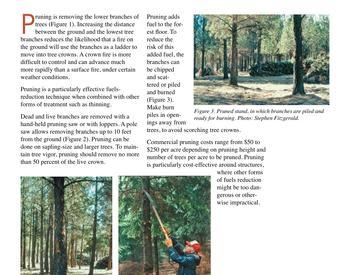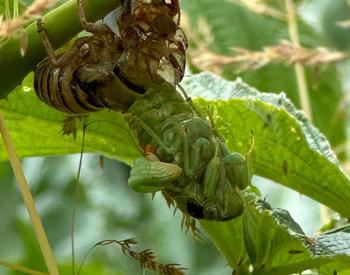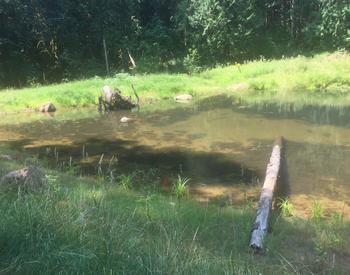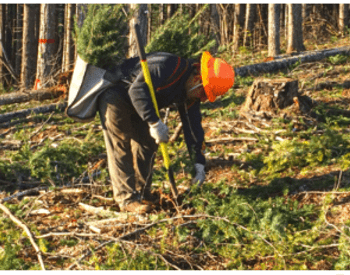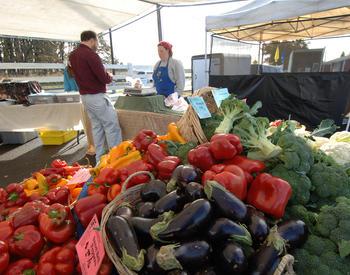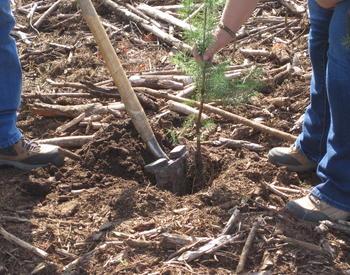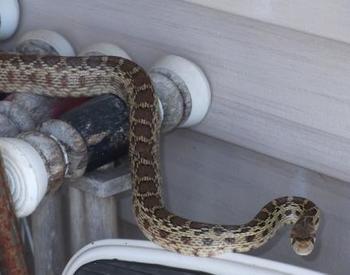Transcript
(upbeat music)
- In this video, we're
going to be talking about
opportunities that you have
for seeding flowering plants
to increase food
resources for pollinators.
After a harvest or disturbance,
you might wanna help things along
by seeding flowering
plants in skid trails,
landings, or burn piles.
These areas are great places for seeding
because there'll be fewer
native plants coming up
after a harvest or disturbance.
Focusing on these areas is also important
because evidence shows that seeding
into a clear cut alone with no direction
doesn't result in many
flowering plants coming up.
Often there's invasive
species or a seed bank already
in the soil that out
competes the flowering plants
that you're hoping to provide habitat
for your pollinators.
In landings and skid trails
you can do the same site preparation
that you'll be doing for
your reforestation project,
doing some tendings, spot spraying,
or pulling before you seed the flowers.
One of the other benefits
of seeding wildflowers
is that they don't compete too
much with your tree seedlings
so you'll be able to plant
at a similar density that
you would out in the unit.
The next big consideration
is choosing your seed mix.
There's going to be lots
of options out there
but we have a few tips
for you to think about
when choosing your mix.
Try to focus on native species
and a good mixture of annuals,
short lived perennials
and long lived perennials.
You'll wanna watch out for flowers
that take up a lot of space
and are pretty dominant in an area
such as lupines and yarrow.
So make sure there's a lower
percentage of your seed mix
that are of those species,
so they don't completely
dominate the area.
When thinking about what seeds
you might wanna put on your property,
you might be interested in looking into
what rare pollinator
species live in your area
and choosing what flowers
that they like to visit
and plant those on your property.
There's resources like bloom calendars
that help you identify
which flowers will
bloom early in the year,
mid-year, and late year,
so that you have a good mix of bloom times
for your seed mix.
You also want to look for a
diversity of flower shapes,
so that you can provide various resources
for pollinators with
varying types of anatomy.
Sometimes they'll be
grasses in your seed mix.
You want to be careful
of having too much grass,
probably no more than 50% and
only consider bunch grasses.
Otherwise grasses could take over
and you won't have enough
flowering resources
for your pollinator habitat.
When thinking about how
much seed to put out,
it's good to have about 50
to 60 seeds per square foot.
Try to lay out the seed in early winter,
before the first snow or right
after the first snow melts.
This will help get temperatures low enough
for seeds that require a frost
and the winter rains help push the seeds
into the ground for them
to be able to germinate.
Getting the seeds out in winter
also helps with reduce
of loss from rodents
or birds eating your seed.
Don't forget to flag out
your wildflower plots,
so that when you're doing site preparation
or site maintenance
you don't spray over
your wildflower plots.
If invasive species do come up
or other plants that you don't want,
you can still spot spray
or pull out unwanted plants
to provide more space for
your wildflower seedlings.
Lastly, don't be afraid
if your flowers don't
come up the first year.
Sometimes it takes a year or two
for them to be able to germinate
and you'll see increased
flowering resources
over the next few years.
When building your burn piles,
consider building more burn piles
that are a little bit smaller,
and the reason for this
is because when they burn,
they're more likely to leave
a little bit more woody debris
around the outside edge.
When this happens and you seed
the inside of the burn pile
then you have flowering resources
for pollinators on the inside
and you have nesting habitat
right there and available
for pollinators around the
outside ring of your burn pile.
In burn piles, you don't
have to worry about
doing too much site preparation
because the heat from the fire
has already sterilized the soil
and there won't be many seeds there
to compete with the
seeds that you lay out.
When considering what locations
to seed your wildflowers
or putting any type of
pollinator habitat enhancement,
try to stay away from areas
where there might be higher
risks to pollinators,
like places where fungicides
or insecticides are heavily used.
(upbeat music)
Enhance pollinator habitat in your woods by seeding wildflowers. We describe how to find a good seed mix as well as when and how to seed.




